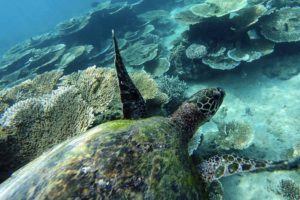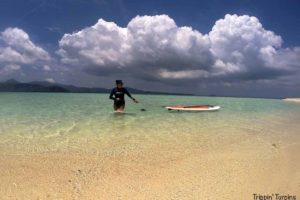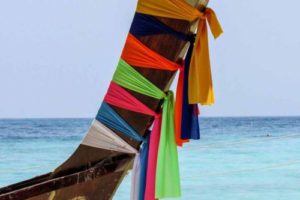Have you dreamt of a live-aboard life?
This post, the first in a short series, is aimed at helping new sailors or those dreaming of live-aboard life with nautical terminology and sailing must-dos. In these articles, I will touch on important issues facing new sailors, starting with boating terminology and types of boats and continuing to include the act of sailing, anchoring, berthing, picking up a mooring, planning for a passage, provisioning, etc.
Want to see some of the places we have sailed? Check out our sailing posts.
Learning to sail can be daunting, but it can also be a lot of fun. Since meeting Dwayne in 2001 and becoming a live-aboard yachtie* in 2014, I have sailed over 30,000 nautical miles and learned much. Although I am now a confident sailor, I still have times when I feel like a beginner. On the other hand, Dwayne, with nearly 100,000 nautical miles under his belt, is such a confident and skilled sailor that it is hard to believe he wasn’t born with a tiller in his hand.
One of my earliest ‘sailing’ memories was when Dwayne and I sailed in Darwin in 2004. We were both on deck when Dwayne asked me to go below and get a sheet. I grabbed what I thought looked more likely to be a sheet—a sail. On reappearing on deck with the sail in my arms, Dwayne laughed and then explained that a sheet was a rope. Go figure.
* Yachtie – A person who owns, manages, or frequently spends time on a yacht; (later also) a worker on a yacht. [Oxford English Dictionary]
Bow – the front of the boat. This is important to know as it enables you to identify port and starboard.
Stern – back of the boat
Port – left side of the boat. “Port” is represented by the colour red.
Starboard – right side of the boat. “Starboard” is represented by the colour green.
An easy way to remember port and starboard and the colour representing them is with the verse “There is no RED port LEFT.”
Aft – is towards the rear of a vessel.
F’ward – is towards the front of the vessel.
Midships – (also amidships) is between the bow and the stern of a ship.
Exterior
Transom – The very back of the boat. The aft “wall” of the stern.
Hull – the body of the boat.
Gunwale – (pronounced gunnel) the uppermost side of the sides of the hull, above the deck.
Toerail – is where the hull and deck join. It helps prevent objects and people from sliding off the boat.
Freeboard – the height (distance) of the hull above the water.
Waterline – where the hull meets the surface of the water.
Topsides – The area of the hull between the waterline and deck.
Deck – is the horizontal surface on a boat’s outer surface, i.e. where we walk.
Steering
Cockpit – is where the maneuvering controls are, i.e., the helm, engine controls, or joystick. It is often also the outside seating area on a sailboat, commonly an aft or centre cockpit.
Helm – is the system of steering the boat, i.e. a wheel or a tiller.
Tiller – is a lever attached to the rudder of a boat, which enables the boat to be steered by moving the rudder.
Rudder – is a hinged apparatus at the stern of the boat that, when moved from side to side with a ship wheel or tiller, turns the boat.
Keel – is the backbone of the boat. It runs along the bottom of the yacht along the longitudinal centre. The two crucial functions of the keel are to keep the boat balance in the water and to stop the boat from going sideways when sailing.
Hatch, windlass, davits and more.
Lifelines – Cables or lines held up with stanchions (upright posts) that prevent people or gear from falling overboard.
Anchor windlass – a winch used to let out and heave up a boat’s anchor.
Anchor rode – The line (rope or cable) connecting the anchor chain to the vessel.
Davits – are lifting devices located on the aft of a sailboat to store or launch tenders, such as inflatable dinghies. Davits is also the name given to a small crane-like arm used to lift outboard motors aboard when storing them on a rail at the back of the boat.
Tender – (dinghy) a smaller vessel, sometimes wooden, aluminium or inflatable, used to transport people or items from a boat to shore and vice versa.
Bosun’s chair – a strong sling-type device that a person can sit in. It has connection points that allow a halyard to be attached, thus allowing it (and the person) to be winched up the mast. It is useful for making repairs along the mast.
Rigging and Sails
Running rigging is used to sail the vessel. It raises, lowers, shapes, and controls the sails, such as halyards.
Standing rigging consists of various cables and rods called backstays, forestays, sidestays, and shrouds (usually stainless steel but can also be Dyneema, carbon fibre, or kevlar). The rigging supports the mast, preventing it from falling.
Mast – the mast holds the main sail and supports the head sail.
Boom – is a pole (spar) that is joined to the mast and supports the bottom of the mainsail.
Mainsail – the sail that is attached to the mast.
Foresail – is the forwardmost sail. Often called headsail, jib or staysail.
Storm jib – a small sail used during heavy weather.
Halyard – is a rope that is used to raise the sail.
Main halyard – a rope that hoists the mainsail up the mast.
Headsail halyard – a rope that hoists the headsail.
Sheet – is a rope used to control a sail. It is connected to the clew or, in the case of a mainsail, is connected to the boom near the clew.
Main sheet – a rope connected to the boom (if one is being used) or the clew of the mainsail, and controls the movement of it, i.e. pulls the main on – towards the middle of the vessel, or lets it out – further away from the middle of the vessel. This is called trimming the sail.
Headsail sheet – is used to control the foresail. It pulls it in or lets it out.
Winch – is used to winch in a sheet or winch up a halyard.
Topping lift – a cable or rope that, from the top of the mast, can support, lift, or lower the boom as needed.
Boom vang – controls the leech tension of a sail.
Hatch – A hatch is an opening that provides access to the interior of a boat from the deck. Many yachts have multiple hatches. For instance, we have three hatches: two on the deck that allow air to flow into the boat and provide access when needed, and the main hatch that connects the cockpit (also known as the companionway) to the boat’s interior. Many sailing boats have a sliding hatch at their companionway, allowing easier access.
Companionway – is the opening with a stairway or ladder connecting the deck and cabin or connecting two decks.
Interior
Sole – the internal floor of the boat.
Cabin – an internal, protected area on a boat. Most commonly, a bedroom on a boat.
Berth – an internal protected area on the boat, such as the bedroom.
V-Berth – is the berth located in the bow of a boat and shaped like a V.
Locker – is an area on a boat where gear is stowed.
Head – is the toilet.
Saloon – the lounge or sitting area.
Galley – the kitchen.
Nav Station – (navigation station) is where the boat navigation systems are located, i.e. radar, charts, GPS, VHF and/or HAM radios.
Bilge – beneath the sole. Basically, it is inside the hull of the boat. If water leaks into your vessel, it will go into the bilge, and thus, it is called bilge water. You pump out this water with a bilge pump.
There you go. That is the basics of boat terminology. I hope that helps.
Up next – Types of sailing boats.
Like this post? Please share or pin using the image below, thank you!















Leave a Reply
Your email is safe with us.